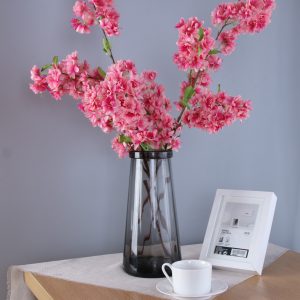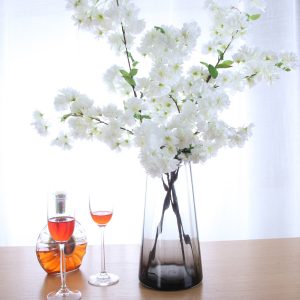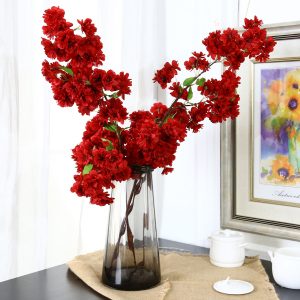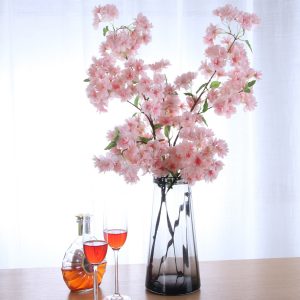



Product parameters
Total length: 100cm
Material: crepe
Color: red, white, pink
Characteristics
Choose high-quality crepe and environmentally friendly dyes, the petals are full and lifelike, the color is natural, and it is not easy to fade. The petals and foliage are clear in texture, the color transitions naturally, and the shape is realistic. Feel comfortable, no less than the touch of real flowers, easy to care.
Introduction
Sakura (scientific name: Cerasus sp.): It is the collective name for several plants of the genus Rosaceae. In the newly revised name of the Chinese Flora, it refers to “Tokyo Sakura”, also known as “Japanese Sakura”. The variety of cherry blossoms is quite numerous, with more than 300 species. There are about 150 species of wild cherry blossoms in the world and more than 50 species in China. Among the 40 species of sakura-like wild species ancestors in the world, there are 33 species native to China. Others are varieties derived from horticultural hybridization.
Sakura is native to the northern hemisphere temperate ring of the Himalayas and grows throughout the world, mainly in Japan. Flowers 3 to 5 per branch, into umbels, apex apex, mostly white, pink. Flowers often bloom with leaves or leaves after March, and vary with the seasons. The cherry blossoms are fragrant and colorful, and are often used for garden viewing. Sakura can be divided into two types: single-valve and double-valve. Single-valve can bear fruit, and most of the complex-type lobes are not fruitful.
According to literature research, cherry blossoms have been cultivated in Chinese palaces during the Qin and Han dynasties more than 2,000 years ago. Cherry blossoms in the Tang Dynasty have generally appeared in private courtyards. At that time, the nations came to the DPRK, and Japanese pilgrims brought the cherry blossoms back to Dongpu, which has a history of more than 1,000 years in Japan. The cherry blossom symbolizes warmth, purity and nobleness. Respected as the national flower of Japan.
